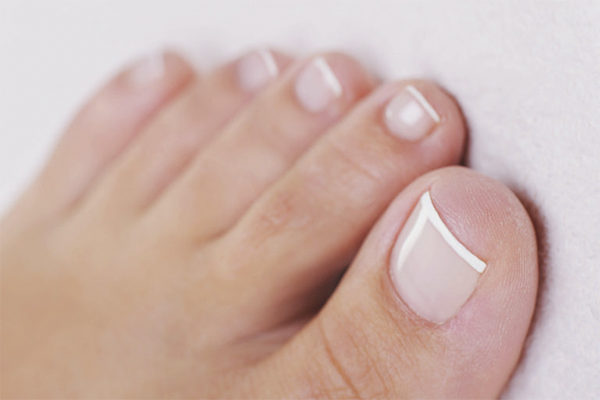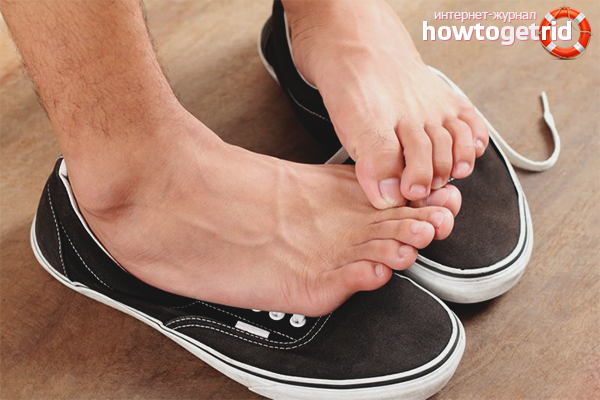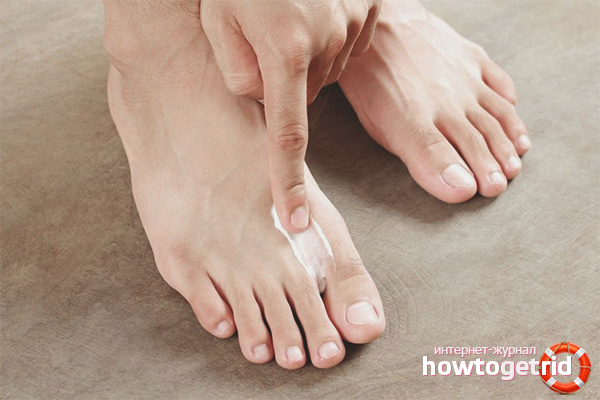The content of the article
In summer, the beauty of neat feet becomes more relevant than ever. After all, each of us wants to take off shoes on the beach without hesitation, to walk around the city in open sandals, to choose in the shoe store those models of shoes that you like, and not those that fit. Many men admit that well-groomed female legs have their own charm and even sexuality. But how to achieve this beauty, if the legs struck an insidious nail fungus?
Everyone knows that getting rid of the fungus is not so easy. Often he lives on the skin for years, all his life accompanying his master. If you decide once and for all to get rid of nail fungus, you need to have an idea about the symptoms of this disease, as well as how to treat it. Onychomycosis (nail fungus) is quite difficult to treat. It takes more than one month. If you are offered a magic tool that needs to be applied only once - do not believe this manufacturer or doctor. Fungal spores can live at the base of the nail plate for up to 8-10 months.To fully cure of the fungus, you need to completely change the nail plate twice. It will take more than six months, depending on the growth rate of the nails.
Everyone knows that any disease is much easier to treat if you notice it at an early stage of development. So is the nail fungus. If you start treatment only with dryness and reddening of the skin, everything will pass literally within a month. The more damaged the nail plate, the longer it will take to achieve complete recovery. But what symptoms on the nails and skin may indicate early onychomycosis?
How to recognize nail fungus
Early symptoms of onychomycosis are rarely associated with this particular disease. Often, peeling on the skin is taken for avitaminosis, itching - for contact allergies. If you find yourself experiencing the following symptoms, you should definitely pay attention to them and visit a dermatologist.
- During the initial infection, the skin of the feet acquires an unusual dryness, peeling appears, especially in the areas between the fingers.
- When the fungus is well established, itching, redness, and cracks may occur in the affected areas of the skin.
- If the fungus has moved to the nails, it means that he firmly settled on your feet, and it will not be so easy to drive him out. First, the nail changes color or shape, thickens, acquires various grooves. In the later stages of infection, the fungus completely destroys the nail plate, it exfoliates and crumbles.
- One of the first signs of damage to the nail fungus can be considered a change in its shape and, as a consequence, cutting into the soft tissue.
- In the last stages of the development of the fungus, inflammation may begin around the nail plate, a rash appears, the ichorosis is released, and the tissues often bleed.
- Fungal damage affects the general condition of a person - immunity decreases, apathy, drowsiness, and weakness appear.
- The color of the nail may vary depending on the type of fungus. The nail plate can become yellow, brown, burgundy and even black. The intensity of the color can also be completely different, the nail can be bright or cloudy, the fungus can hit the whole plate or only a part of it.
It is important to understand that in order to get a nail fungus, it is not enough just to get in touch with an infected object.The spores of the fungus that enter the skin react with healthy bacteria that live on the skin surface. If a person is healthy and the number of pathogenic fungi is small, the beneficial bacteria quickly suppress the enemy, preventing him from settling down in a new territory. If the immunity is weak, not able to withstand the fungus, infection occurs quickly enough. But how to protect yourself from nail fungus? In what situations is a person at risk?
How to avoid infection of the fungus on the legs
Here are some cases in which you can become infected with onychomycosis.
- Bath, sauna, swimming pool. It is very easy to get infected in public places, where you have to touch bare floor with the floor. In the pool and sauna, be sure to wear rubber slippers. In the shower, make sure that the water to your feet does not flow from the neighboring booths. To protect yourself, after visiting such places, you should thoroughly wash your feet with hot water and soap, and then disinfect with alcohol or any other antiseptic. Especially carefully treat the area between the fingers - the cunning fungus takes root there.The same should be done after the beach, if you walked barefoot in the sand.
- Moisture and warm. In order for the spores of the fungus to settle down and begin to multiply actively, a high temperature (more than 75 degrees) and increased humidity are needed. That is why fungi most often appear in people living in the subtropics. However, in a cold strip, the fungus is not a rare guest, since it is such conditions that appear in warm shoes - high temperature and humidity. To avoid this, you need to air and dry your shoes more often, dress according to the weather, sleep with bare legs, wear only cotton socks and loose shoes.
- Infected person. Often, the fungus goes to a healthy person at home, by infection from a sick relative. The use of common hygiene items leads to the fact that all family members can become infected, especially those with low immunity - children, the elderly, pregnant women. To avoid this, you need to wash and disinfect the bath after bathing the person infected with the fungus, do not use common bath supports (especially wooden ones - they contain a lot of bacteria). In no case can not wear and even try on the shoes and socks of a sick person, do not forget about slippers.You can become infected with fungus in the store, if you have shoes with a person with infected feet. Be sure to wear a sock or stocking during the fitting, and before wearing a new shoe, treat it with an antiseptic.
In addition, you need to raise the immune system so that the body can resist various bacteriological infections. To do this, eat right, harden, spend more time on physical activity, be in the fresh air, do not be nervous, get enough sleep.
How to treat fungus
What to do if you found in your nail fungus? Most importantly, do not panic. With sufficient persistence and an integrated approach it is quite possible to get rid of the fungus. To do this, the first thing to see a doctor. It is not enough to go to the pharmacy and buy the first available drug. You need to know the type of fungus, identify the causative agent and act pointwise. To do this, analyzes are taken, namely, the scraping is taken from the affected nail. After that, the doctor prescribes adequate treatment. As a rule, treatment is complex.
With minor lesions of the nail and skin irritation can do with local gels and ointments.If the fungus has affected most of the nail, tablets are usually prescribed to act not only from the outside, but also from the inside. Most of them need to be taken systemically, that is, for quite a long time. At the same time, it is necessary to regularly cut off the growing (painful) part of the nail in order to reduce the risk of reinfection of healthy tissue.
In addition, there are folk remedies for the treatment of nail fungus. To defeat the insidious and annoying spores, the nails and the skin around them are treated with iodine, salicylic acid, vinegar, manganese, tea tree oil, garlic juice and celandine, as well as many other means. To obtain a real result, folk remedies and pharmaceutical preparations should be used regularly and for a long time.
Nail fungus is very insidious. He can hide behind minor changes in the shape or color of the nail, and then appear before you in all its glory in the form of a completely destroyed and damaged nail plate.If even one nail is different from others, if the skin is itchy and flaky, if the nail has ceased to be elastic and transparent - this is a reason to immediately consult a doctor. Be alert and attentive to your body.
Video: treatment of nail fungus with hydrogen peroxide













To send